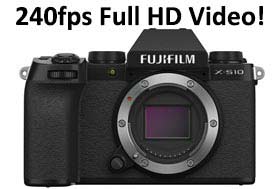Now that the surprise camera of 2020 has been out for a while, it is time to revisit the 240fps mode included in the video features. At first glance, it delivered 720p quality or less in an upscaled 1080p wrapper. However many Fuji fans asked us to revisit the slow motion quality of this camera as early samples supposedly did not do justice to what this mode was able to deliver.
We have to agree to some extent that the quality of this camera in 240fps Full HD slow motion is better than other even more expensive options but we still feel that Fuji cut corners when it comes to image quality here by dropping lines and having a pretty noisy output unless there is an ample amount of light. We have some samples that will let you see what this camera is capable of and make you decide if it is a good enough option for your camera collection. → Continue Reading Full Post ←
The FUJIFILM X-H1 which offers 120fps 1080p slow motion was a worthwhile effort to offer high frame rates that are usable to their video-centric base. It still was not as good as the Sony or Panasonic slow motion options due to aliasing, moire, and noise but with a little post work, it could be used with success in an edited piece. FUJI then with a firmware update for their stills flagship the X-T2 allowed the camera to now shoot the same 120fps 1080p slow motion which makes sense considering they use the same sensor on both cameras.
The camera site CVP has done a full comparison review here which pits the X-H1 against the X-T2 to see which camera strengths are ahead on each body and if it makes sense for X-T2 owners who are invested in a FUJI lens system to upgrade. Their findings are interesting and as far as slow motion it is clear that while they use most of the same imaging pipeline; the X-H1 has the edge with less crop, less aliasing, and better artifact suppression when using the 120fps slow motion mode. → Continue Reading Full Post ←
The Latest on Hi Speed Affordable Imaging!


